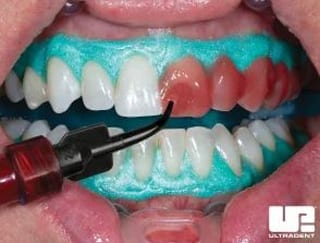My dentist can’t match bonding to my whitened teeth
Posted by AllSmiles
I decided to get Zoom whitening before dental bonding because my teeth were dull. I needed the bonding because I had sensitivity near my gumline. So my dentist completed Zoom, and we waited to see if my teeth were white enough, then she did a repeat office treatment. I loved the whiteness of my teeth, and I got compliments on my smile. I thought I was ready for bonding until my dentist finished it. Now my teeth look pasty and rough. My dentist failed to tell me that she didn’t know how to match the bonding to my whitened teeth. So I am going to find another dentist to redo the bonding. But I would like to know if a dentist must remove the current bonding. Or can they add new bonding on top of it? – Thanks. Chase from IN
Chase,
We are sorry to hear about the disappointment with your bonding after you completed Zoom whitening.
If a dentist has cosmetic dentistry training, it should not be difficult to match the color and texture of your teeth. And matching bonding is not a complex matter.
Does Botched Dental Bonding Need to Be Replaced?
Whether or not a dentist must replace dental bonding depends on the extent of the color difference. Another dentist might be able to remove some of the surface of your existing bonding and use another color to resurface it. Otherwise, a dentist can etch off the current bonding and replace it. A dentist can tell the difference between composite bonding and your tooth structure.

A dental bur is a tool used for cutting, grinding, and removing tooth structure or dental work. A bur can remove your existing composite without harming your tooth structure.
Abfraction Lesions—Causes and Treatment
An abfraction lesion is an area above the gumline where the tooth structure is worn away. An abfraction is usually caused by clenching or grinding your teeth.
- Appearance – It looks like an indentation in the tooth
- Effects – Lesions expose layers beneath the enamel and create sensitivity
- Progression – Although an abfraction is not a cavity, it can become difficult to clean and promote decay if it extends below the gumline.
- Long-term treatment – If you know you grind your teeth—or if your dentist detects grinding—you can get a custom nightguard to wear while you sleep. It will protect your teeth from the force of grinding and help your bonding last longer.
Although a good family dentist can match bonding to the whiteness of your teeth, look for a dentist with advanced cosmetic dentistry training. It will minimize the chances of being disappointed with the results again.
Thomas J. Goebel, DDS, a Moline, IL cosmetic dentist, sponsors this post.
